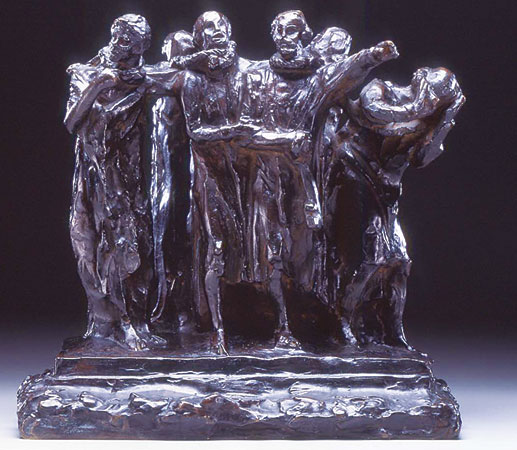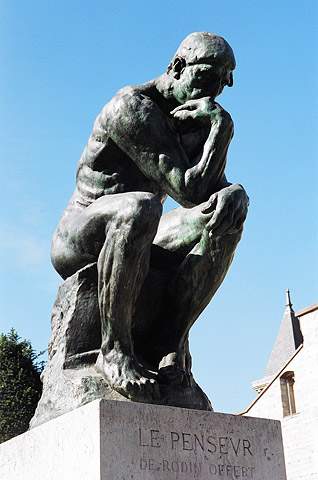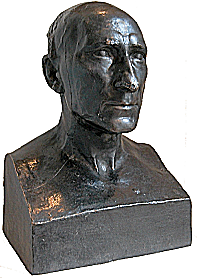skip to main |
skip to sidebar
Born on February 12, 1809, in Kentucky, Lincoln moved at a young age to Indiana then later to New Salem, Illinois. He served as a captain in the U.S. Army during the Black Hawk War. He later tried his hand at several business and political ventures. He was highly regarded as a practicing lawyer. Lincoln served four terms in the Illinois State Legislature, was briefly elected to Congress (1846) and had a successful law practice in Illinois both before and after his single term in the House of Representatives. It is commonly held that Lincoln had turbulent mood swings alternating between grandiosity and depression, which greatly moderated after his marriage to Mary Ann Todd in 1842. First elected to the House of Representatives, Lincoln spent most of his time in Washington, DC alone and made a less than spectacular impression on his fellow politicians. During his unsuccessful campaign for the United States Senate against Stephen A. Douglas, it was Lincoln's well-known gift of oratory that brought public support to an otherwise unimpressive candidate. Lincoln debated Douglas in a series of events which represented a national discussion on the issues that were about to split the nation in two. The Lincoln-Douglas debates presaged the Presidential election of 1860, in which Douglas and Lincoln were once again opponents. On November 6, 1860, Lincoln was elected as the 16th President of the United States, the first Republican to hold that office. Shortly after his election, the South made it clear that secession was inevitable which greatly increased tension across the nation. President-elect Lincoln survived an assassination attempt in Baltimore, Maryland and on February 23, 1861 arrived secretly in disguise to Washington, DC. The South ridiculed Lincoln for this seemingly cowardly act, but the efforts at security may have been prudent. At Lincoln's inauguration on March 4, 1861, the Turners formed Lincoln's bodyguard, and a sizable garrison of Union troops was always present, ready to protect the president and the capital from rebel invasion.He showed tremendous leadership to the Union populace during the war as evidenced by the Gettysburg Address, a speech dedicating a cemetery of union soldiers from the Battle of Gettysburg in 1863. While most of the speakers—eg Edward Everett—at the event spoke at length, some for hours, Lincoln's few choice words resonated across the nation and across history, defying Lincoln's own prediction that "The world will little note, nor long remember what we say here." While there is little documentation of the other speeches of the day, Lincoln's address is regarded as one of the great speeches in history.
When Richmond, the Confederate capital, was at long last captured, Lincoln went there to make a public gesture of sitting behind Jefferson Davis's desk in Davis's own chair, symbolically saying to the nation that the President of the United States, and the U.S. constitution, held authority over the entire land. He was greeted at the city as a conquering hero by freed slaves whose sentiments were epitomized by one admirer's quote, "I know I am free for I have seen the face of Father Abraham and have felt him."
The reconstruction of the Union weighed heavy on the President's mind. He was determined to take a course that would not permanently alienate the former Confederate states.
In 1864, Lincoln faced a presidential election, an unprecedented situation considering it was during a civil war. The long war and the issue of emancipation appeared to be severely hampering his prospects and an electoral defeat appeared likely against George McClellan. However, a series of timely Union victories shortly before election day changed the situation dramatically and Lincoln was reelected.
Lincoln met frequently with Grant as the war ended. The two men planned matters of reconstruction, and it was evident to all that the two men held one another in high regard. During their last meeting, on April 14, 1865, Lincoln invited General Grant to a social engagement for that evening. Grant declined (his wife was not eager to spend time with Mary Todd Lincoln).
Without the General and his wife, the Lincolns left to attend a play at Ford's Theater. The play was Our American Cousin, a musical comedy. As Lincoln sat in the balcony, John Wilkes Booth, an actor and Southern sympathizer from Virginia, crept up behind Lincoln in his State Box and aimed a single-shot, round-slug .44 caliber derringer at the President's head and fired at point-blank range. He shouted "Sic semper tyrannis!" (Latin: "Thus always to tyrants," and Virginia's state motto; some versions say he said "The south is avenged!") and jumped from the balcony to the stage below, breaking his leg in the process.
Booth managed to limp to his horse and escape, and the mortally wounded president was taken to a house across the street where he lay in a coma for some time before he quietly expired. Booth and several of his companions (some of whom were later shown to be innocent) were eventually captured and either hanged or imprisoned.
Lincoln's body was carried by train in a grand funeral procession through several states. The nation mourned a man who many viewed as the savior of the United States and protector and defender of what Lincoln himself called "the government of the people, by the people, and for the people." Critics say that it was in fact the Confederates that were defending the right of "government for the people" and Lincoln who was suppressing that right. They further insist that Lincoln only preserved the union in a geographical sense while destroying its voluntary nature.

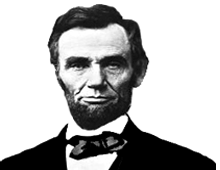


Albert Einstein (March 14, 1879 – April 18, 1955) was a German-born American theoretical physicist who is widely regarded as the greatest scientist of the 20th century. He proposed the theory of relativity and also made major contributions to the development of quantum mechanics, statistical mechanics, and cosmology. He was awarded the 1921 Nobel Prize for Physics for his explanation of the photoelectric effect and "for his services to Theoretical Physics".
Upon graduation, Einstein could not find a teaching post, mostly because his brashness as a young man had apparently irritated most of his professors. The father of a classmate helped him obtain employment as a technical assistant examiner at the Swiss Patent Office in 1902. There, Einstein judged the worth of inventors' patent applications for devices that required a knowledge of physics to understand. He also learned how to discern the essence of applications despite sometimes poor descriptions, and was taught by the director how "to express myself correctly". He occasionally rectified their design errors while evaluating the practicality of their work.
Upon graduation, Einstein could not find a teaching post, mostly because his brashness as a young man had apparently irritated most of his professors. The father of a classmate helped him obtain employment as a technical assistant examiner at the Swiss Patent Office in 1902. There, Einstein judged the worth of inventors' patent applications for devices that required a knowledge of physics to understand. He also learned how to discern the essence of applications despite sometimes poor descriptions, and was taught by the director how "to express myself correctly". He occasionally rectified their design errors while evaluating the practicality of their work.
On May 14, 1904, the couple's first son, Hans Albert Einstein, was born. In 1904, Einstein's position at the Swiss Patent Office was made permanent. He obtained his doctorate after submitting his thesis "A new determination of molecular dimensions" ("Eine neue Bestimmung der Moleküldimensionen") in 1905.
That same year, he wrote four articles that provided the foundation of modern physics, without much scientific literature to which he could refer or many scientific colleagues with whom he could discuss the theories. Most physicists agree that three of those papers (on Brownian motion, the photoelectric effect, and special relativity) deserved Nobel Prizes. Only the paper on the photoelectric effect would win one. This is ironic, not only because Einstein is far better-known for relativity, but also because the photoelectric effect is a quantum phenomenon, and Einstein became somewhat disenchanted with the path quantum theory would take. What makes these papers remarkable is that, in each case, Einstein boldly took an idea from theoretical physics to its logical consequences and managed to explain experimental results that had baffled scientists for decades.
Albert's gifts inevitably resulted in his dwelling much in intellectual solitude and, for relaxation, music played an important part in his life. He married Mileva Maric in 1903 and they had a daughter and two sons; their marriage was dissolved in 1919 and in the same year he married his cousin, Elsa Löwenthal, who died in 1936. He died on April 18, 1955 at Princeton, New Jersey.
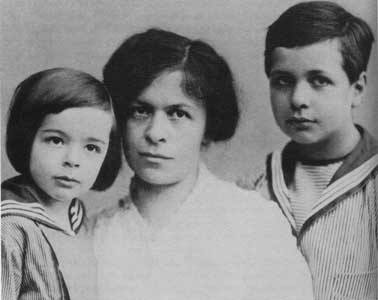 Einsteins wife Mileva with her sons Eduard and Hans Albert
Einsteins wife Mileva with her sons Eduard and Hans Albert
 Einstein, in 1905, when he wrote the "Annus Mirabilis Papers"
Einstein, in 1905, when he wrote the "Annus Mirabilis Papers"
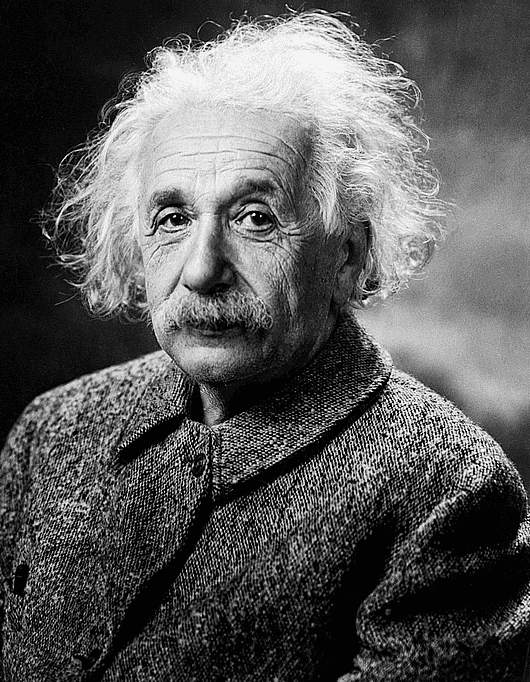




He was educated at Presidency College, Calcutta, and then at Trinity College, Cambridge, where he earned a BA in 1956, and a PhD in 1959. He has since held positions at universities around the world, including Calcutta, Delhi, Oxford, Berkley, Harvard and the London School of Economics. In 1997 he returned to Cambridge as Master of Trinity College, a post he held until 2004. As a young man Sen was deeply affected by the violence that followed the 1947 partition of India - and in particular the effect that violence had on the poorest members of society - and, also, by the great Bengal famine of 1943 in which almost three million people died.
These two catastrophes proved the catalyst for a lifetime's interest in, and study of the economics of poverty and famine. He has published numerous highly influential books and articles, including the seminal "Poverty and Famines: An Essay on Entitlement and Deprivation" (1981) in which he proposed the radical - and now widely accepted - theory that famine occurs not because of a lack of food, but rather because of inequalities built into the mechanisms of distributing food. In recognition of his work he was awarded the 1998 Nobel Prize for Economics, the first welfare economist to be thus honored. He has since used some of the prize money to establish the Pratichi Trust to promote primary education in India.
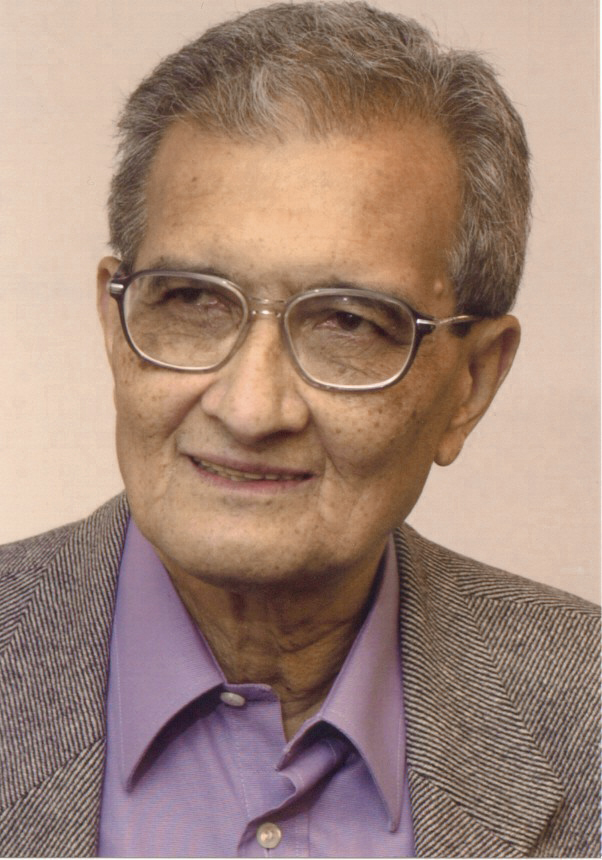

Amartya Sen argues that democracy is the best way to avoid famines. Of course, a well-functioning democracy is not a sufficient condition for the absence of famines. Other mechanisms also contribute to famine prevention, so it’s not impossible to see famines in democracies.




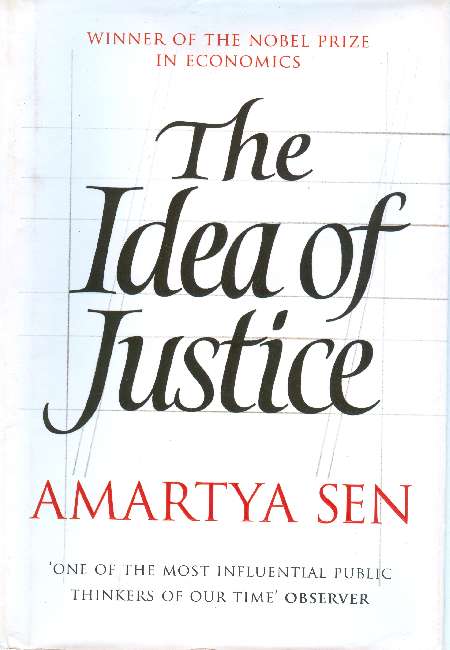




Andrew Carnegie was born on November 25, 1835, in Dunfermline, Scotland, the son of William Carnegie, a weaver, and Margaret Morrison Carnegie. The invention of weaving machines replaced the work Carnegie's father did, and eventually the family was forced into poverty. In 1848 the family left Scotland and settled in Allegheny City, Pennsylvania. Carnegie's father found a job in a cotton factory, but he soon quit to return to his home handloom, making linens and trying to sell them door to door. Carnegie also worked in the cotton factory, but after his father died in 1855, his strong desire to help take care of the family pushed him to educate himself. He became an avid reader, a theatergoer, and a lover of music.
Carnegie became a messenger boy for the Pittsburgh telegraph office. He later became a telegraph operator. Thomas A. Scott, superintendent of the western division of the Pennsylvania Railroad, made the eighteen-year-old Carnegie his secretary. Carnegie was soon earning enough salary to buy a house for his mother. During the Civil War (1861–65), when Scott was named assistant secretary of war in charge of transportation, Carnegie helped organize the military telegraph system. But he soon returned to Pittsburgh to take Scott's old job with the railroad.
Between 1865 and 1870 Carnegie made money through investments in several small iron mills and factories. He also traveled throughout England, selling the bonds of small United States railroads and bridge companies. Carnegie began to see that steel was eventually going to replace iron for the manufacture of rails, structural shapes, pipe, and wire. In 1873 he organized a steel rail company. The first steel furnace at Braddock, Pennsylvania, began to roll rails in 1874. Carnegie continued building by cutting prices, driving out competitors, shaking off weak partners, and putting earnings back into the company. He never went public (sold shares of his company in order to raise money). Instead he obtained capital (money) from profits—and, when necessary, from local banks—and he kept on growing, making heavy steel alone. By 1878 the company was valued at $1.25 million.
In the 1880s Carnegie's purchases included a majority stake in the H. C. Frick

Company, which had vast coal lands and over one thousand ovens in Connellsville, Pennsylvania, and the Homestead mills outside of Pittsburgh, Pennsylvania. Frick became his partner and eventually chairman of the Carnegie Company. Carnegie had moved to New York City in 1867 to be close to the marketing centers for steel products; Frick stayed in Pittsburgh as the general manager. They made a good team. Behind the scenes, Carnegie planned new projects, cost controls, and the improvement of plants; Frick was the working director who watched over the mass-production programs that helped keep prices down.
Carnegie spent his leisure time traveling. He also wrote several books, including Triumphant Democracy (1886), which pointed out the advantages of American life over the unequal societies of Britain and other European countries. To Carnegie access to education was the key to America's political stability and industrial accomplishments. In 1889 he published an article, "Wealth," stating his belief that rich men had a duty to use their money to improve the welfare of the community. Carnegie remained a bachelor until his mother died in 1886. A year later he married Louise Whitfield. They had one child together. The couple began to spend six months each year in Scotland, though Carnegie kept an eye on business developments and problems.
Carnegie's absence from the United States was a factor in the Homestead mill strike of 1892. After acquiring Homestead, Carnegie had invested in new plants and equipment, increased production, and automated many of the mill's operations, cutting down the number of workers that were needed. These workers belonged to a union, the Amalgamated Association of Iron and Steel Workers, with which the Carnegie Company had established wage and work agreements on a three-year basis. Carnegie believed that workers had a right to bargain with management through their unions. He also recognized the right to strike, as long as the action was conducted peacefully. He viewed strikes as trials of strength, with peaceful discussion resolving the conflict.
In contract talks during 1892, Frick wanted to lower the minimum wage because of the need for fewer workers. The union would not accept this and organized a strike. Carnegie was in Scotland, but he had instructed Frick that if a strike occurred the plant was to be shut down. Frick decided to smash the union by hiring people from the Pinkerton Agency as replacement workers and by trying to open the company properties by force. Two barges carrying three hundred Pinkertons moved up the Monongahela River and were shot at from the shore. The Pinkertons fired back, but they eventually surrendered. Five strikers and three Pinkertons were killed, and there were many injuries. The strikers had won; the company property remained closed. Five days later the governor of Pennsylvania sent in soldiers to restore order and open the plant. The soldiers were eventually withdrawn, and two months later the union called off the strike. Carnegie was criticized for his lack of action.
In the 1890s Carnegie also began to meet with tougher competition from newer, bigger companies who were interested in controlled prices and sharing the market. Companies that he had sold to for years threatened to cut down their purchases unless he agreed to cooperate. These threats made him decide to fight back. He refused to enter into any agreements with other companies. Moreover, he decided to invade their territories by making similar products and by expanding his sales activities into the West. Eventually, though, he decided to sell his company to the newly formed U.S. Steel Corporation in 1901 for almost $500 million. Carnegie's personal share was $225 million.
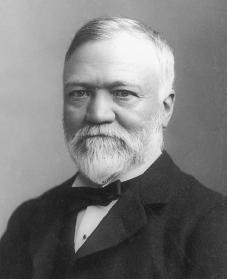
 andrew carnegie work
He was a good man all his life. His hard-working entrepreneurial spirit, while not very friendly to the environment, was friendly to business and provided vast employment to many people. With or without all of his pioneering philanthropy, his fundamental characteristic of entrepreneurial business, that which built his massive wealth, benefited society by pushing the very boundaries of the economy and industrial technology to a point whereby, I might say, this country was pushed to the forefront of greatest nations and was indeed the basis of our economy today. To sum it up: he was not the only one to benefit from his wealth. The so-called 'toilers' were gainfully employed, who would otherwise not be. For this contribution alone, I think he is overlooked and is sometimes even vilified. Why must a nation apologize for this kind of contribution.
andrew carnegie work
He was a good man all his life. His hard-working entrepreneurial spirit, while not very friendly to the environment, was friendly to business and provided vast employment to many people. With or without all of his pioneering philanthropy, his fundamental characteristic of entrepreneurial business, that which built his massive wealth, benefited society by pushing the very boundaries of the economy and industrial technology to a point whereby, I might say, this country was pushed to the forefront of greatest nations and was indeed the basis of our economy today. To sum it up: he was not the only one to benefit from his wealth. The so-called 'toilers' were gainfully employed, who would otherwise not be. For this contribution alone, I think he is overlooked and is sometimes even vilified. Why must a nation apologize for this kind of contribution.
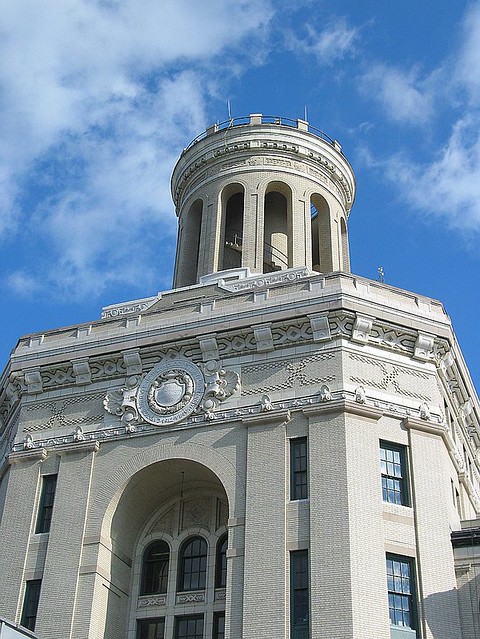


Pierre Auguste Renoir was born in Limoges, France, on February 25, 1841, the sixth of Léonard Renoir and Marguerite Merlet's seven children. His father was a tailor, and his mother was a dressmaker. His family moved to Paris, France, in 1844. Because he showed a remarkable talent for drawing, Renoir became an apprentice (one who works for someone in order to learn his or her trade) in a porcelain factory, where he painted plates. Later, after the factory had gone out of business, he worked for his older brother, decorating fans. Throughout these early years Renoir made frequent visits to the Louvre (the world's largest and most famous art museum, located in Paris), where he studied the art of earlier French masters, particularly those of the eighteenth century—Antoine Watteau (1684–1721), François Boucher (1703–1770), and Jean Honoré Fragonard (1732–1806). His deep respect for these artists influenced his own painting throughout his career.
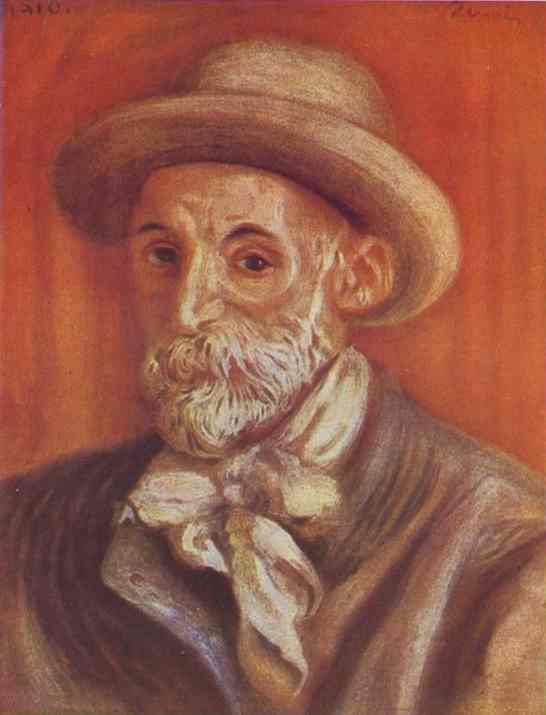
In 1862 Renoir decided to study painting seriously and entered the studio of the painter Charles Gleyre, where he met other artists such as Claude Monet (1840–1926), Alfred Sisley (1839–1899), and Jean Frédéric Bazille (1841–1870). During the next six years Renoir's art showed the influence of Gustave Courbet (1819–1877) and Édouard Manet (1832–1883), the two most innovative (doing things in a new way) painters of the 1850s and 1860s. Courbet's influence is especially evident in the bold Diane Chasseresse (1867), while Manet's influence can be seen in the flat tones of Alfred Sisley and His Wife (1868). Still, both paintings reveal a sense of intimacy (closeness) that is characteristic of Renoir's personal style.
The 1860s were difficult years for Renoir. At times he was too poor to buy paints or canvas, and the Salons (exhibitions, or displays) of 1866 and 1867 rejected his works. The following year the Salon accepted his painting Lise, a portrait (picture of a person, especially their face) of his girlfriend, Lise Tréhot. He continued to develop his work and to study the paintings of other artists of the day—not only Courbet and Manet, but Camille Corot (1796–1875) and Eugène Delacroix (1798–1863) as well. Renoir's debt to Delacroix is apparent in the lush (appealing to the senses) Odalisque (1870).

A revolution was beginning in French painting. A number of young painters began to rebel against the traditions of Western painting and went directly to nature for their inspiration and into the actual society of which they were a part. As a result, their works revealed a look of freshness that in many ways departed from the look of Old Master painting. The new art displayed bright light and color instead of the solemn browns and blacks of previous painting. These qualities, among others, signaled the beginning of impressionist art.
In 1869 Renoir and Monet worked together at La Grenouillère, a bathing spot on the river Seine. Both artists became interested in painting light and water. According to Phoebe Pool (1967), this was a key moment in the development of impressionism, for it "was there that Renoir and Monet made their discovery that shadows are not brown or black but are coloured by their surroundings, and that the 'local colour' of an object is modified by the light in which it is seen, by reflections from other objects and by contrast with juxtaposed [placed side by side] colours."
The styles of Renoir and Monet were almost identical at this time, a sign of the dedication with which they pursued and shared their new discoveries. During the 1870s they continued to work together at times, although their styles generally developed in more personal directions. In 1874 Renoir participated in the first impressionist exhibition; his works included the Opera Box. Of all the impressionists, Renoir most thoroughly adapted the new style to the great tradition of figure painting.
Although the impressionist exhibitions were the targets of much public scorn during the 1870s, Renoir's popularity gradually increased during this time. He became a friend of Caillebotte, one of the first supporters of the impressionists, and he was also backed by several art dealers and collectors. The artist's connection with these individuals is documented by a number of handsome portraits, for instance, Madame Charpentier and Her Children (1878). In the 1870s Renoir also produced some of his most celebrated impressionist scenes, including the Swing and the Moulin de la Galette (both 1876). These works show men and women together, openly and casually enjoying a society bathed in warm sunlight. Figures blend softly into one another and into their surrounding space. These paintings are pleasurable and full of human feeling.
By the end of the 1880s Renoir had passed through his dry period. His late work is truly remarkable: a glorious outpouring of nude figures, beautiful young girls, and lush landscapes. Examples of this style include the Music Lesson (1891), Young Girl Reading (1892), and Sleeping Bather (1897). In many ways, the generosity of feeling in these paintings expands on the achievements of his great work in the 1870s.
Renoir's health declined severely in his later years. In 1903 he suffered his first attack of arthritis (a painful swelling of the joints) and settled for the winter at Cagnes-sur-Mer, France. The arthritis made painting painful and often impossible. Still, he continued to work, at times with a brush tied to his crippled hand. Renoir died at Cagnes-sur-Mer on December 3, 1919, but not before an experience of supreme triumph: the state had purchased his portrait Madame Georges Charpentier (1877), and he traveled to Paris in August to see it hanging in the Louvre.

His art was noted for its vibrant combination of colours. In classic impressionist style, he avoided rigid lines, and merged objects giving a sense of dream like consciousness. He also painted many portraits of women - often in nude. They focus not on the sexual aspect but often of everyday experiences.

 Initially, the art establishment was unimpressed by the new breed of painters and the impressionists struggled to have any exhibitions. Renoir, supplemented his income by drawing more conventional portraits.
In 1881 he visited Algeria and then Italy. In Italy, he was deeply impressed by the Italian masters. After meeting Cezanne near Marseille, Renoir sought to break away from Impressionism by developing a new structural style of his own.
Initially, the art establishment was unimpressed by the new breed of painters and the impressionists struggled to have any exhibitions. Renoir, supplemented his income by drawing more conventional portraits.
In 1881 he visited Algeria and then Italy. In Italy, he was deeply impressed by the Italian masters. After meeting Cezanne near Marseille, Renoir sought to break away from Impressionism by developing a new structural style of his own.
 Yet, he never abandoned his techniques of colour that he learnt during his impressionist period and he developed a combination of classical styles of applying paint with an impressionist perspective of colour.
Towards the end of the nineteenth century he gained increasing fame and respect. In 1892, the French state bought one of his paintings - At the Piano.
As ill-fortune would have it, his fame and greater renown also coincided with the onset of arthritis which made painting difficult and painful. But, he struggled on and continued to paint some great masterpieces.
Yet, he never abandoned his techniques of colour that he learnt during his impressionist period and he developed a combination of classical styles of applying paint with an impressionist perspective of colour.
Towards the end of the nineteenth century he gained increasing fame and respect. In 1892, the French state bought one of his paintings - At the Piano.
As ill-fortune would have it, his fame and greater renown also coincided with the onset of arthritis which made painting difficult and painful. But, he struggled on and continued to paint some great masterpieces.

François Auguste Rodin, the son of a police inspector, was born in Paris, France, on November 12, 1840. A shy child, Rodin showed little interest in anything besides drawing, and by the time he turned thirteen he had decided to dedicate his life to becoming an artist.
Rodin studied drawing under Horace Lecoq de Boisbaudran and modeling under the sculptor Jean Baptiste Carpeaux at the School of Decorative Arts in Paris (1854–1857). At the same time Rodin studied literature and history at the College de France. Rejected three times by a well-known art school, he supported himself by doing decorative work for ornamentalists and set designers.
In 1864 Rodin began to live with the young seamstress Rose Beuret, whom he married the last year of his life. Also in 1864 he completed his Man with a Broken Nose, a bust of an old street porter, which the Salon (French art gallery) rejected. That year he entered the studio of Carrier-Belleuse, a sculptor who worked in the light rococo, or elaborate, mode of the previous century. Rodin remained with Carrier-Belleuse for six years and always spoke warmly of him. In 1870 he and his teacher went to Brussels, Belgium, where they began the sculptural decoration of the Bourse.
 In 1875 Rodin went to Italy, where he was deeply inspired by the work of Donatello and of Michelangelo, whose sculpture he characterized as being marked by both "violence and constraint." Back in Paris in 1876, Rodin made a bronze statue of a standing man raising his arms toward his head in such a way as to project an air of uncertainty, a figure held in a pose of slight torsion suggestive of Michelangelo's Dying Slave. Rodin originally entitled the piece the Vanquished, then called it the Age of Bronze. When he submitted it to the Salon, it caused an immediate controversy, for it was so lifelike that it was believed to have been cast from the living model. The piece was unusual for the time in that it had no literary or historical connotations. After Rodin was exonerated by a committee of sculptors, the state purchased the Age of Bronze.
In 1878 Rodin began work on the St. John the Baptist Preaching and various related works, including the Walking Man. Lacking not only moral and sentimental overtones but a head and arms as well, the Walking Man was an electrifying image of forceful motion. Derived partially from some of Donatello's late works, it was based on numerous poses of the model in constant motion. Rodin raised the very act of walking into a subject worthy of concentrated study.
Rodin's interests continued to broaden. Between 1879 and 1882 he worked at ceramics, and between 1881 and 1886 he produced a number of engravings. By 1880 his fame had become international, and that year the minister of fine arts commissioned him to design a doorway for the proposed Museum of Decorative Arts. The project, called the Gates of Hell after Dante's Inferno, occupied Rodin for the rest of his life, and particularly in the next decade, but it was never finished. The Gates were cast in their incomplete state in the late 1920s.
For Rodin, the study of the human figure in a variety of poses indicative of many emotional states was a lifelong preccupation. In the St. John the artist caught the prophet at the moment when he was moved deeply, gesturing automatically by the strength of the idea he was presenting. The gestures of Rodin's figures seem motivated by inner emotional states. In his bronze Crouching Woman (1880-1882) an almost incredibly contracted pose becomes something beyond a mere mannerism. The cramped posture of the woman suggests humility, perhaps a conviction of detabasement.
One of Rodin's most ambitious conceptions was the group commissioned by the municipality of Calais as a civic monument. The Burghers of Calais (1884-1886), a group larger than life size, commemorates the episode during the Hundred Years War when a group of local citizens agreed to sacrifice their lives to save their city. The pathos and horror of the subject accord with the romantic sentiments of the time. One of the figures clutches his head, another exhorts his companion, an older man walks stoically ahead. Each of the burghers is individualized, even while they all move ahead to a common purpose. The psychological interactions of the figures were acutely observed, and a lifelike immediacy was achieved. The group was finally installed in 1895.
In 1875 Rodin went to Italy, where he was deeply inspired by the work of Donatello and of Michelangelo, whose sculpture he characterized as being marked by both "violence and constraint." Back in Paris in 1876, Rodin made a bronze statue of a standing man raising his arms toward his head in such a way as to project an air of uncertainty, a figure held in a pose of slight torsion suggestive of Michelangelo's Dying Slave. Rodin originally entitled the piece the Vanquished, then called it the Age of Bronze. When he submitted it to the Salon, it caused an immediate controversy, for it was so lifelike that it was believed to have been cast from the living model. The piece was unusual for the time in that it had no literary or historical connotations. After Rodin was exonerated by a committee of sculptors, the state purchased the Age of Bronze.
In 1878 Rodin began work on the St. John the Baptist Preaching and various related works, including the Walking Man. Lacking not only moral and sentimental overtones but a head and arms as well, the Walking Man was an electrifying image of forceful motion. Derived partially from some of Donatello's late works, it was based on numerous poses of the model in constant motion. Rodin raised the very act of walking into a subject worthy of concentrated study.
Rodin's interests continued to broaden. Between 1879 and 1882 he worked at ceramics, and between 1881 and 1886 he produced a number of engravings. By 1880 his fame had become international, and that year the minister of fine arts commissioned him to design a doorway for the proposed Museum of Decorative Arts. The project, called the Gates of Hell after Dante's Inferno, occupied Rodin for the rest of his life, and particularly in the next decade, but it was never finished. The Gates were cast in their incomplete state in the late 1920s.
For Rodin, the study of the human figure in a variety of poses indicative of many emotional states was a lifelong preccupation. In the St. John the artist caught the prophet at the moment when he was moved deeply, gesturing automatically by the strength of the idea he was presenting. The gestures of Rodin's figures seem motivated by inner emotional states. In his bronze Crouching Woman (1880-1882) an almost incredibly contracted pose becomes something beyond a mere mannerism. The cramped posture of the woman suggests humility, perhaps a conviction of detabasement.
One of Rodin's most ambitious conceptions was the group commissioned by the municipality of Calais as a civic monument. The Burghers of Calais (1884-1886), a group larger than life size, commemorates the episode during the Hundred Years War when a group of local citizens agreed to sacrifice their lives to save their city. The pathos and horror of the subject accord with the romantic sentiments of the time. One of the figures clutches his head, another exhorts his companion, an older man walks stoically ahead. Each of the burghers is individualized, even while they all move ahead to a common purpose. The psychological interactions of the figures were acutely observed, and a lifelike immediacy was achieved. The group was finally installed in 1895.

From the late 1880s Rodin received many commissions from private individuals for portrait busts and from the state for monuments recognizing well-known people. Among Rodin's portrait busts are those of playwright George Bernard Shaw (1856–1950), writer Henri Rochefort (1830–1913), and poet Charles Baudelaire (1821–1867).
In the Head of Baudelaire (1892), as in his other portraits, Rodin went beyond mere realism to catch the inner spirit. Baudelaire's face looks ahead with strict attention, and the eyes seem to be transfixed (concentrated) upon something invisible.
Rodin matured slowly, and his first principal work, the Age of Bronze, was not made until he was past thirty-five, yet he achieved fame in his lifetime. After 1900 he knew intimately many of the great men of his time, and his apprentices included Antoine Bourdelle (1861–1929) and Charles Despiau (1874–1946). In 1916 Rodin left his works to the state. He died in Meudon, France, on November 17, 1917.
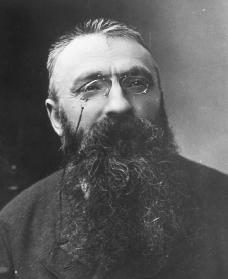
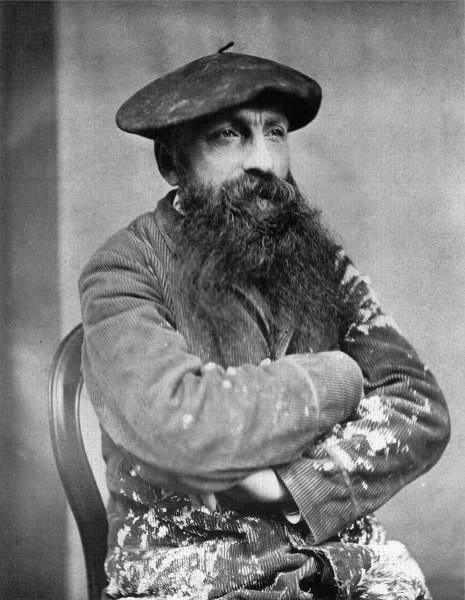

Auguste Rodin art
